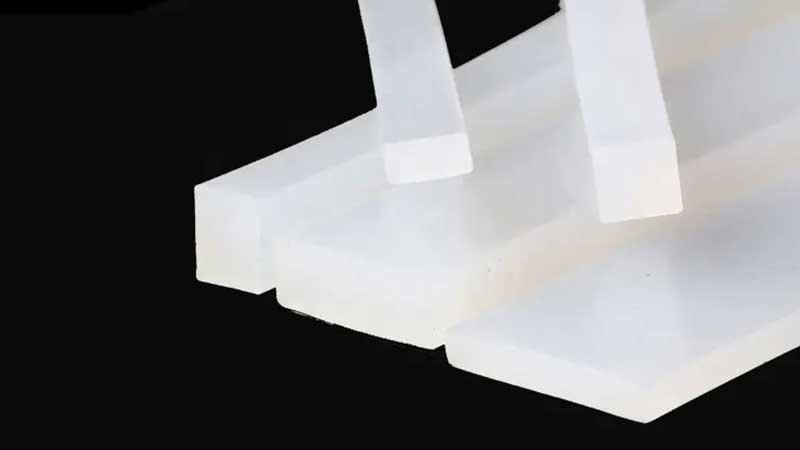Silicone strips are essential in many applications, from sealing windows to protecting parts. However, UV exposure and weather can impact their performance. Do you know how these factors affect the durability and effectiveness of silicone strips?
Silicone strips resist extreme conditions, but UV rays and weather can still cause damage over time. This can lead to cracking, loss of flexibility, and failure in critical applications.
What Does UV Radiation Do to Silicone Strips?
UV radiation can weaken silicone over time. When silicone strips are exposed to sunlight, UV rays can cause photodegradation. This breaks down the material, leading to cracking and stiffness.
Even though silicone is resilient, continuous UV exposure can cause discoloration and make the strips brittle.
Over time, this leads to loss of elasticity, which is crucial for maintaining a good seal. UV-stabilized silicone strips can resist this damage better than standard ones.

How Do Weather Conditions Impact Silicone Strips?
Weather changes, like temperature shifts and humidity, also affect silicone strips. While silicone handles extreme temperatures well, repeated heating and cooling can cause thermal stress, leading to micro-cracks. In cold weather, silicone can become too stiff, and in heat, it can get too soft.
Humidity can cause some silicone strips to swell, especially if they have fillers. This can affect their fit and function. Constant exposure to rain or snow can also wear down the surface, reducing their effectiveness over time.
How Can You Protect Silicone Strips From UV and Weather Damage?
To protect silicone strips, use UV-stabilized materials. These are designed to resist UV rays better. Applying a protective coating can also help by shielding the silicone from UV and weather.
Proper installation is key. Ensure the strips are securely placed to minimize exposure to the elements. Regular inspections can catch early signs of damage, allowing for timely replacement and preventing bigger issues.

Do Different Types of Silicone Strips React Differently?
Yes, different silicone formulations have varying resistance to UV and weather.
High-consistency rubber (HCR) may resist UV better than liquid silicone rubber (LSR).
Fillers in silicone can also influence how it reacts to environmental factors.
Color matters too—darker strips absorb more UV, while lighter strips reflect it, reducing potential damage. Choosing the right type and color can enhance longevity.
What Are the Long-Term Implications of UV and Weather Exposure?
Over time, UV and weather can degrade silicone strips, leading to system inefficiencies and increased maintenance costs.
In buildings, failed seals can cause energy loss and water damage.
In cars, they can lead to leaks and wind noise.
In industrial settings, damaged silicone strips can cause downtime and equipment failure.
By understanding these effects and choosing the right materials, you can avoid these costly problems.
Conclusion
Silicone strips are tough but not invincible. UV exposure and weather conditions can cause them to degrade over time. By using UV-stabilized materials and taking protective measures, you can ensure your silicone strips last longer and perform better.